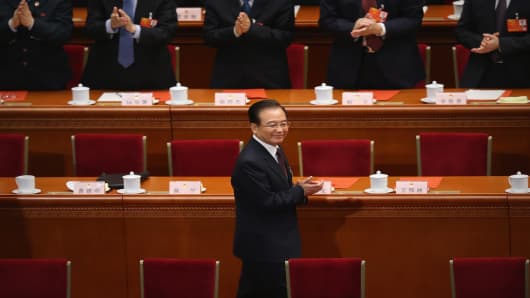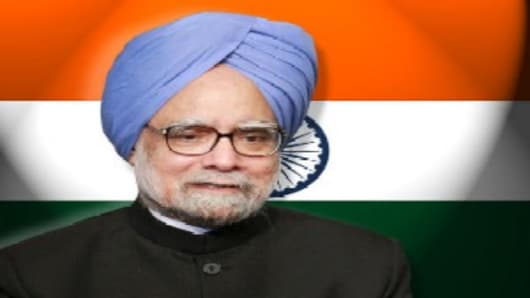Although largely reported as a fence-mending exercise in the wake of recent Sino-Indian border incidents, the Chinese Prime Minster Li Keqiang's visit to India last week was mostly about trade and finance between the two countries representing one-fifth of the world economy and a prodigious market of about 2.5 billion people.
The talk of mutual trust and consultation mechanisms was very much in the air, but the economy was on everybody's mind. While welcoming his Chinese guest in searing 46 degree Celsius heat, Prime Minister Manmohan Singh knew that in a few days he would be standing next to his boss, the governing Congress Party leader Sonia Gandhi, waving a copy of his Report to the People – a sort of manifesto before next year's general elections - where India's declining economic growth is mainly ascribed to the euro area's recession and a sluggish U.S. economy.
It is a good bet that Mr. Singh suspected that Indian voters might think otherwise. A dispiriting thought no doubt at the time when the Congress Party is bidding for a third five-year term to lead the world's largest democracy. Not so much because, predictably, the opposition Bharatiya Janata Party (BJP) promptly dismissed the idea that India's flagging growth was a result of weak export demand. No, Mr. Singh surely expected that the BJP would put the blame squarely on the government's mismanagement of the economy.
But the next blow was shattering: An opinion poll released last week showed that, if elections were held now, 31 percent of respondents would vote for BJP, while the Congress Party would get only 20 percent of the vote.
The weak economy will make it very tough to turn this situation around in the months ahead, even if there are no further desertions of the coalition partners and no major corruption scandals. Indeed, facing binding policy constraints of high inflation and budget and external deficits, it will be quite a challenge to stabilize the economy around its current 5 percent growth rate.
And the path from there to India's estimated growth potential of 8 percent will be even more difficult if there is a reversal of large capital inflows on growing speculations about less accommodative monetary policies in the United States and similar policy corrections in Japan. Markets are already signaling these events. Reversals of capital flows have also been foreshadowed in recent warnings by the Reserve Bank of India.
(Read More: This Could Devastate India's Prized IT Sector)
How Can Trade With China Help?
Capital outflows, or even slowing inflows of foreign savings, would put an end to India's further credit easing to stimulate domestic demand, because the financing of India's large trade deficits (6-7 percent of the gross domestic product) would require rising interest rates.
That is the economic environment in which Mr. Li's visit to India was taking place. And the question is: What role could a China guanxi (connection) play? There are several possibilities.




